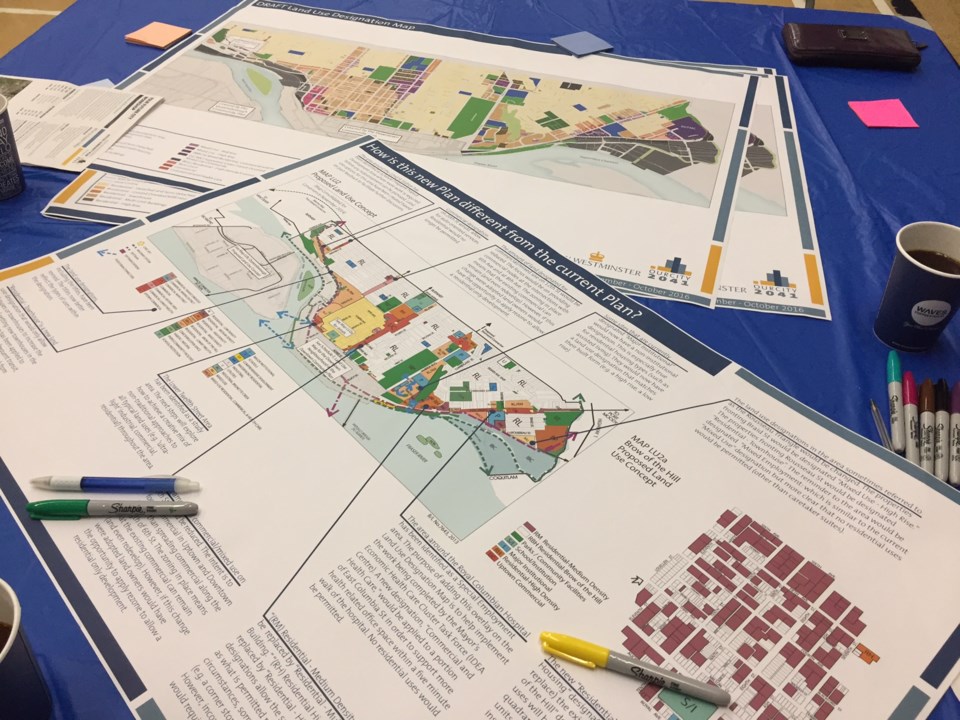Some Glenbrook North residents are interested in new housing options for their neighbourhood, but it’s too late to be considered in the current official community plan update.
J.D. Puri recently told city council he was aware changes were being proposed in Glenbrook North that would have seen his area’s designation changed from single-detached dwelling to a residential - infill townhouse. Because the proposal was supported by the Glenbrook North Residents’ Association, he said he was “taken aback” when council decided to leave the area as it’s currently designated in the OCP.
Since then, Puri has “pounded the pavement” and visited 25 homes along Eighth Avenue, where he found most residents and many businesses supported increased density in that part of the Glenbrook North neighbourhood.
“If you look at how the New West OCP map has been changed, there is a section on Colborne Street that includes 17 homes. There’s a section on East Eighth Avenue that includes 25 homes,” he said. “I think it is a very reasonable compromise to have the 25 homes that are facing Eighth Avenue be designated residential ground-oriented infill.”
While the homes on Colborne and First Street are “along the quiet side” and could retain their existing designation, Puri believes owners of the homes bordering Eighth Avenue are more willing to add density. The plan is to leave the homes designated as residential – detached and semi-detached.
“I think that meets the goal of the OCP while still providing a bit of fairness,” he said. “It seems there are two different groups at play here.”
Coun. Chuck Puchmayr said residents’ associations often pass resolutions that may not always reflect the wishes of residents in the area.
“I felt very comfortable that we did respond to an issue,” he said. “We did respond to an overwhelming number of residents that had a position that was adverse to the position you are making here tonight.”
New West resident Rahul Chander also supports increased density for six specific houses in Glenbrook North. Given that the houses face Eighth Avenue, are close to transit and are directly in front of a lowrise building, he said they should be treated “a little bit different” than other buildings in the neighbourhood.
“I think it’s really a good opportunity for higher density if the council would consider that,” he said. “That is why we proposed townhouse zoning for just the six houses.”
Mayor Jonathan Cote said the city has spent close to three years working on the official community plan and had a lot of great discussions in the community. While one of the city’s main goals was to try and find new opportunities for different types of infill housing in the community, including a few proposals in Glenbrook North, he said council ultimately decided to leave the land-use designation as-is in the area around Eighth Avenue and First Street.
“I think it is worth a conversation. But the challenge we have is we are moving to first and second reading of the OCP at our next meeting,” Cote said. “We have passed the point to be able to make even small changes without having to once again do proper consultation.”
Jackie Teed, the city’s acting director of development services, said the city has actually received three different petitions covering different components of this neighbourhood.
“In looking and doing an analysis of what we have, it’s actually pretty unclear. Each petition is for a different land use. We have one that would prefer townhouses, one that would prefer single detached and duplexes and one that would prefer residential ground-oriented infill. Probably what makes it even more difficult is we have a number of households that have signed two or three of the petitions,” she said. “We really wouldn’t recommend making any changes to council now without doing further consultation.”
Cote said it’s worth having a discussion about designations in a small section of the study area, but that would happen during the review of the OCP, which is expected to be two or three years after it’s adopted.
“I don’t think we are going to be looking at significant changes at the two or three year mark, given that OCPs are supposed to live a lot longer. But what has been clear with the various conflicting petitions that the city has been receiving about this area is that this particular location doesn’t necessarily have the consensus or clarity in the community in terms of future land-use designation,” Cote said. “I think this one would be reasonable location to have a look at that during that short-term review.”



